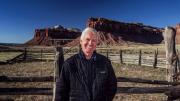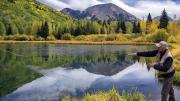A week after defending his biology dissertation, Bill Hedden ’73, Ph.D. ’76, and his wife, Eleanor Bliss ’73, packed their stuff into a pickup truck and drove west. They settled in southeastern Utah, near the city of Moab, on nine acres of unspoiled valley land framed by coral sandstone cliffs, snow-topped mountains, and the Colorado River.
With no power or water well, they camped out for two years—cooking on an open fire, bathing under a waterfall. When they needed money, he worked as a river guide, a carpenter, or on a construction crew for local mining company Atlas Uranium. “We slept in the back of our truck and watched the sky,” Hedden says. “When you do that for awhile, you realize the universe spins around you all the time.”
The New Jersey boy was in love with the American West. He’d never experienced wide-open, wild country, or been so attuned to the sun, rain, and clouds, in a place where it seemed he could walk forever and not see a person.
It helped that Bliss, from Salt Lake City, knew her way around red rock and rattlesnakes. They had $5,000 in savings to slowly build a homestead, and for emergencies. But even without that, says Hedden, who is now the executive director of the Grand Canyon Trust, nothing, not even a promising career in neurobiology, would have stopped him from at least trying to build a life among boundless beauty. “The canyons stunned me,” he said in a speech last year at the University of Colorado Law School’s Getches-Wilkinson Center for Natural Resources, Energy, and the Environment. “If my life of activism has amounted to anything, it was all nascent in those first days of awe and delight.”
Within two years Hedden was more than reveling in this “desert idyll”; he began protecting it. Prompted by the Arab oil embargo and the energy crisis, the U.S. Department of Energy (DOE) was looking to build a nuclear waste dump. Moab, a uranium hub since the 1950s, was home to generations of mining and ranching families used to industrial jobs and detritus, and southeastern Utah officials were in favor of the project. Hedden was not.
For one, it would have sacrificed Canyonlands National Park: nearly 336,000 acres where the Green and Colorado Rivers meet in primitive high desert filled with sandstone canyons, buttes, mesas—unique rock formations millions of years in the making. “They would have had a train running through Moab and some of the country’s most extraordinary and historic landscapes, carrying nuclear waste from all over the United States,” he says. He wrote an op-ed for the local newspaper, went to a few meetings, and then the governor appointed him to a task force on the issue, where Hedden became the leading voice of opposition.
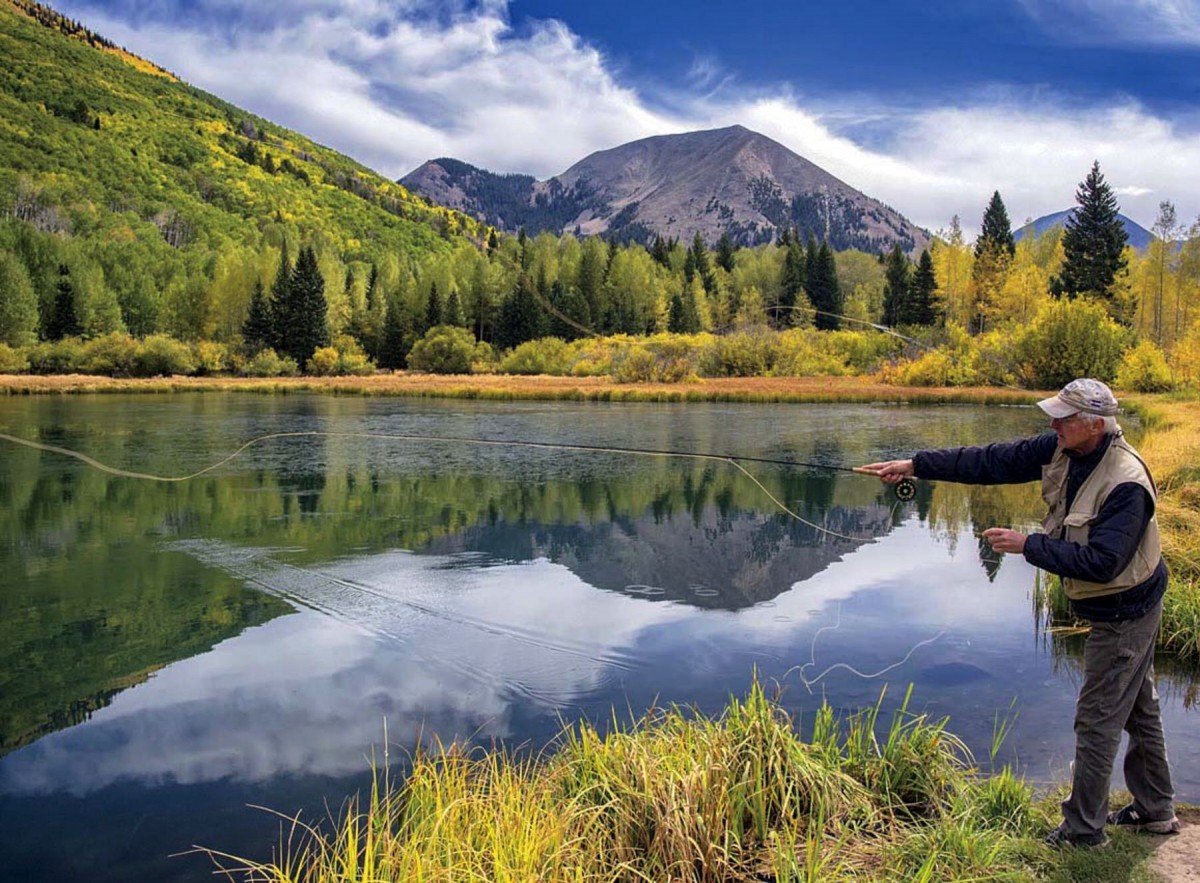
Hedden doing what he loves on Warner Lake in Manti-La Sal National Forest, not that far from his backyard
Photograph by Tim Peterson
The waste repository search dragged on until 1984, when the DOE named 10 sites for further study, none of them in Utah. (Congress ultimately chose Yucca Mountain, in Nevada; nothing’s been built yet.) Hedden kept up with land-use issues across the West, but was absorbed with family life—he and Bliss had built a small house on their land in Castle Valley, had daughters in 1979 and 1982, and kept a garden and fruit trees, which produced much of their food. “We were lucky if we had $1,000 in the bank, but it was really a rich time for us,” he says, “rich in time.” He’d also started making furniture, eventually selling pieces at a fashionable Santa Fe gallery.
They were among a small but noticed influx of newcomers living largely off the land around Moab. The local culture was relatively conservative, and the Sagebrush Rebellion, which has never really died away in Utah, was actively promoting local control over public lands. “Tensions were in the air,” Hedden says. Grand County sheriff’s deputies often came to the valley, suspicious of what else was being cultivated in those vegetable plots. “And they were right,” he says, laughing now. “I think it’s OK to say that—the statute of limitations must be up. Oh, I don’t care!”
The true threat, however, was the death of the region’s economic engine, in 1984. “Everyone voted for Ronald Reagan here in Utah, and then when he did what he said he was going to do—pull the energy subsidies—the uranium industry was over, and within days Moab had lost 35 percent of its employment and went into a pretty long and desperate economic slump in the middle of the 1980s,” Hedden recalls. Then it began to catch on as a mountain-biking mecca.
That “turned Moab’s trickle of tourists into a torrent,” according to a 1996 Christian Science Monitor article, and helped trigger a larger demographic shift that’s still transforming the region’s economy and politics: “In what some see as the emergence of the ‘New West,’ there’s a growing movement here to forge a consensus around preserving the natural environment.” Some did foresee (and fear) what Moab would become today—a booming commercial gateway for outdoor recreation that includes thousands of world-class rock-climbing routes. The city of 5,200 residents bloats to between 15,000 to 30,000 people on weekends, and reaps a fair share of the state’s $8.4-billion tourist industry. Arches National Park alone, a 10-minute drive from downtown, reported 211,706 “recreation visits” in June, up nearly five-fold from the same period in 1979. Construction of hotels, restaurants, outdoor-service companies, and second homes has basically kept pace.
Back in the early 1990s, at the start of this transition, Hedden mostly stayed out of the political fray, but admits he was always appalled by what he heard: debates over grazing “rights” (“Grazing on public land is a privilege, not a right,” he notes, and cows wreak havoc on fragile, arid land); the sacrosanct “right” most Utahans seemed to voice about being able to do “whatever they wanted, wherever they wanted”; the simplistic blaming of the federal government for the mining-industry collapse.
But then, he says, one controversial “boondoggle” known as the Book Cliffs Highway became a crisis. The 43-mile truck route was to run “through the largest unprotected roadless area in the Lower 48,” Hedden says, from the hydrocarbon fields in the Uinta Basin through wilderness to Interstate 70, and connect to transcontinental rail lines.
Amid public outcry, the Grand County government—a three-man “old boy” commission that he says had long run the show—was replaced by a seven-seat council. Asked by fellow county residents to run for a spot, Hedden did, and won it in early 1993, beating out a dozen others on a “nonideological” platform that emphasized practical concerns. The Book Cliffs Highway was defeated, although just last year a coalition of county officials put it back on the table—evidence to Hedden “that no truly terrible idea ever goes away.”
As a new councilman, he focused on shifting precious mineral-lease monies and revenues from royalties on federal lands away from supporting the highway and toward keeping the local hospital afloat, upgrading telecommunications infrastructure, and improving the school system.
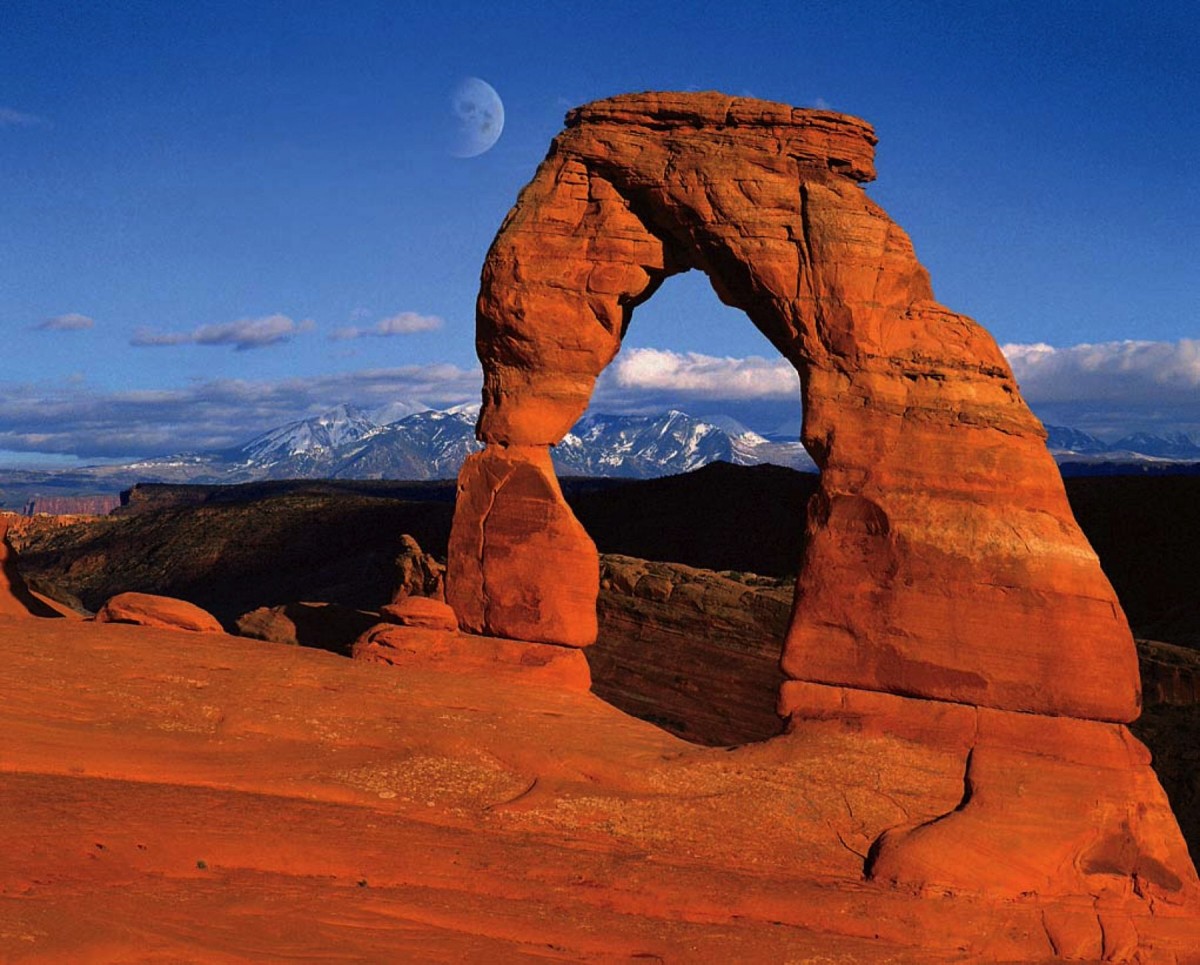
Arches National Park, near Moab, Utah
Photograph by Nagelestock.com/Alamy Stock Photo
It was a wild time. Every meeting of the new council “was standing-room only and filled with angry people. The Sagebrush Rebellion [proponents] were sure,” he says, that “a bunch of crazy environmentalists were taking over, that we would re-introduce wolves onto public lands”—but really those first two years in office were consumed with “dealing with financial mismanagement that had left us with a county budget a half a million dollars in the red.” At the next election, the galvanized traditional forces won back some seats, so the body, he says, was ideologically split between progressives and mining and rancher-minded councilors, and one person who was “just a nice guy.”
Hedden quickly saw that this group of relative amateurs—he includes himself despite his scientific training—was routinely charged with making hugely consequential decisions about public-land use and influencing federal policy. The “nice guy” cast the deciding vote to open part of Moab’s watershed, the Mill Creek Canyon, to development, Hedden says, yet after the meeting asked if the land in question was “up behind the old drive-in movie theater?” It’s far from the only example of locals “not knowing best” that Hedden can reel off after four decades of conservation work.
Hedden does understand scientific data and debates over balancing uses of terrain, especially over the long haul. He went to Harvard wanting to be a marine biologist, then shifted focus as a student of Gund research professor of neurosciences John E. Dowling. But, he says, “At that point all the experiments were mortal and I just decided I couldn’t kill animals anymore.” He’d already taken a few trips out west with Bliss, and decided he’d “go out there and do something else. I figured if that didn’t work out, I could go back to science.”
Three years into his new political life, Hedden was hired by the Grand Canyon Trust (GCT) as the Utah conservation director, which meant expanding his activism and no longer relying on woodworking to support his family. Then he took the helm in 2002.
The environmental-advocacy organization was founded by a group that included then-Arizona governor Bruce Babbitt, LL.B. ’65, in 1985. It seeks to safeguard the greater Grand Canyon region from destructive mining and other development, and is currently involved in the six-year battle against the proposed Grand Canyon Escalade resort and gondola (meant to take up to 10,000 visitors from the East Rim to the canyon floor each day), in support of the Native American campaign against the project, Save the Confluence. (The project is up for a vote by the Navajo Nation Council in October). GCT also joins in the long-running fight that includes Native Americans, against a massive commercial complex on the South Rim—hotels, homes, shops, restaurants—proposed by the Italian-owned Stilo Development Group USA. That would require drilling into the aquifer that supplies seeps, springs, and streams in the Grand Canyon. “They would dry up the things that support wildlife and even make it impossible for people to hike there,” Hedden says. “Water is already such a precious resource.”
GCT encompasses the entire Colorado Plateau. Its roughly 130,000 square miles sprawl across the Four Corners region and include the Colorado River and its tributaries (on which 40 million people depend for water); 55 national parks, monuments, and wilderness areas; and the territory of the Navajo Nation, which covers the lower third of the plateau, south of Moab. Projects are based primarily in northern Arizona and southern Utah. GCT was instrumental in obtaining protection for Bears Ears, a 1.35-million-acre tract located north of the Navajo Nation, designated a National Monument by the Obama administration. Named for two 8,700-foot buttes and, Hedden notes, among the richest archaeological districts in the country, Bears Ears is considered sacred ancestral homelands by many of the area’s Native American tribes. GCT is now in full-on defense mode because Bears Ears and Grand Staircase-Escalante National Monument (also within the plateau) are under threat from U.S. Secretary of the Interior Ryan Zinke. At press time, a leaked copy of Zinke’s memo showed radical shrinkage recommended for both those monuments, as well as others, along with changes to the land management plans in many places to allow, Hedden says, for “traditional uses. Meaning: oil and gas and mining. In essence, it’s an attempt admininstratively to make the American Antiquities Act of 1906 meaningless.” GCT and many other groups, including the tribes who worked for the designation of Bears Ears, he adds, are “ready to sue as soon as the president does something like that that is beyond his authority.”
During his tenure, Hedden has established new and stronger relationships with tribal communities and developed a program that fosters inter-tribal collaboration and sustainable economic development. He has also doubled GCT’s budget to $4 million, (mostly from major donors and foundations, but helped by dues from 3,500 members) and has bolstered an already powerful board of trustees. That includes Native American Rights Fund executive director John E. Echohawk and University of Arizona law school professor Rebecca Tsosie, an expert on indigenous peoples’ law, along with Hansjörg Wyss, M.B.A. ’65, a funder of bioengineering at Harvard, and Texas billionaire David Bonderman, LL.B. ’66, founding partner of TPG Capital. Hedden also recruited his College roommate, Washington, D.C., attorney Ty Cobb ’72, who as a young lawyer took on, pro bono, and won a challenge on behalf of GCT and others to the harmful fluctuating water flows of the Glen Canyon Dam. (In July Cobb resigned from the GCT board, which he’d chaired for four years, to join the Trump administration.)
The organization operates within a web of richly vested interests vying for land and resources, Hedden notes, even as the “industrial-strength tourist industry” and climate change are irrevocably altering the landscape.
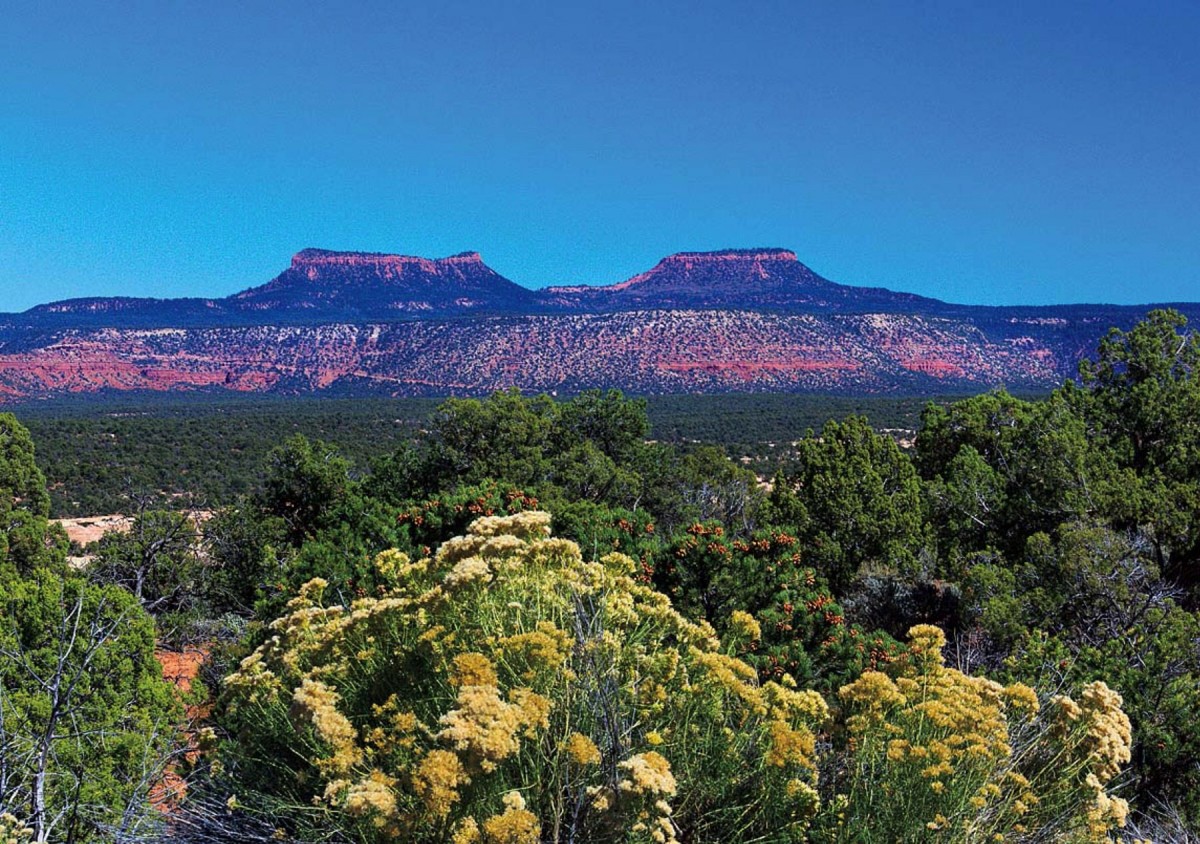
A glimpse of the vast Bears Ears National Monument, which is under threat of shrinkage by the Trump administration
Photograph by Steve Greenwood/Alamy Stock Photo
The Moab area is overridden with car traffic and people, including local residents, he says, who “tear up and down the high desert hills and canyons in off-road vehicles, or mountain bike all over, zoom around on the river in motorboats and jet skis.” Surrounding towns don’t want to become another Moab, he says, yet when he asks, “ ‘Is there one activity you are willing to forbid, so that won’t happen?’ they look at me blankly. They don’t even comprehend what I’m asking them. They’re like, ‘Hey, this is a free country, people can do what they want.’ And I say, ‘Yes, that’s what’s happening in Moab.’”
Even the animals can’t find refuge. “Hunters are going into the back country with four-wheelers and shooting” deer, he says. “There’s no ‘back of beyond’ anymore because we have so many ways of getting there.”
Climate-change forecasts tell other grim stories. Bigger, more severe fires across the Southwest will eradicate forests and other habitats, and “if something grows back, it will be from the south, a different eco-region—you burn off the spruce and fir mountain forest and you will get scrub oak or lodge pine, and that changes everything,” he says. Species cannot adjust fast enough, and will be “out of luck.”
When native grasses are gone amid much hotter weather within the next 20 to 30 years, he says, “ranchers are going to get hammered because no one will want to buy their grazing permits. By pretending they are protecting them, the Congress is instead setting them up for a big fall.”
In the past, the GCT and willing ranchers negotiated market-rate prices for their permits and those lands were closed to cattle, but that ended during the first Bush administration, Hedden says, under pressure from the grazing associations.
Along with disappearing habitats—for animals and humans—there will be “a monumental dearth of water. Even now, rain is erratic,” Hedden warns: the 1922 Colorado River Compact, in which seven basin states agreed to jointly allocate that water supply, overestimated available volumes, and “when the agreement falls apart, it will be the mother lawsuit to end all lawsuits. An interesting mess.”
In January, Hedden begins turning over the executive director role to a longtime colleague, in order to return to working on specific GCT projects—and try to finish a book he’s writing about fishing, something he finds restorative, especially during the summer weeks spent alone in the Canadian wilderness “to gain some perspective.”
At home, in Castle Valley, he and Bliss still live where they settled in 1976. Their children are grown. The fruit trees they planted have become orchards, and the Fremont cottonwoods now stand 10 feet in diameter. The range of 2,000-foot-high Wingate sandstone cliffs still runs across horizon, and to the south and east the craggy La Sal Mountains still loom like a surreal postcard.
Standing outside his house, or hiking in Bears Ears, Grand Staircase-Escalante, or the back reaches of Arches National Park, Hedden feels “an access to some higher dimension of the spirit,” he says, “It’s so old and quiet. But you have to slow down and just be here.” Southern Utah holds only a fraction of “our 640-million-acre common inheritance”: the public lands spread across a third of the continental United States. Most of it is astoundingly beautiful, and deeply connected to America’s practical wealth and historic sense of “New World” identity. “These are our gathering grounds,” he adds, “where we can come together to experience something much bigger than watching television.”
